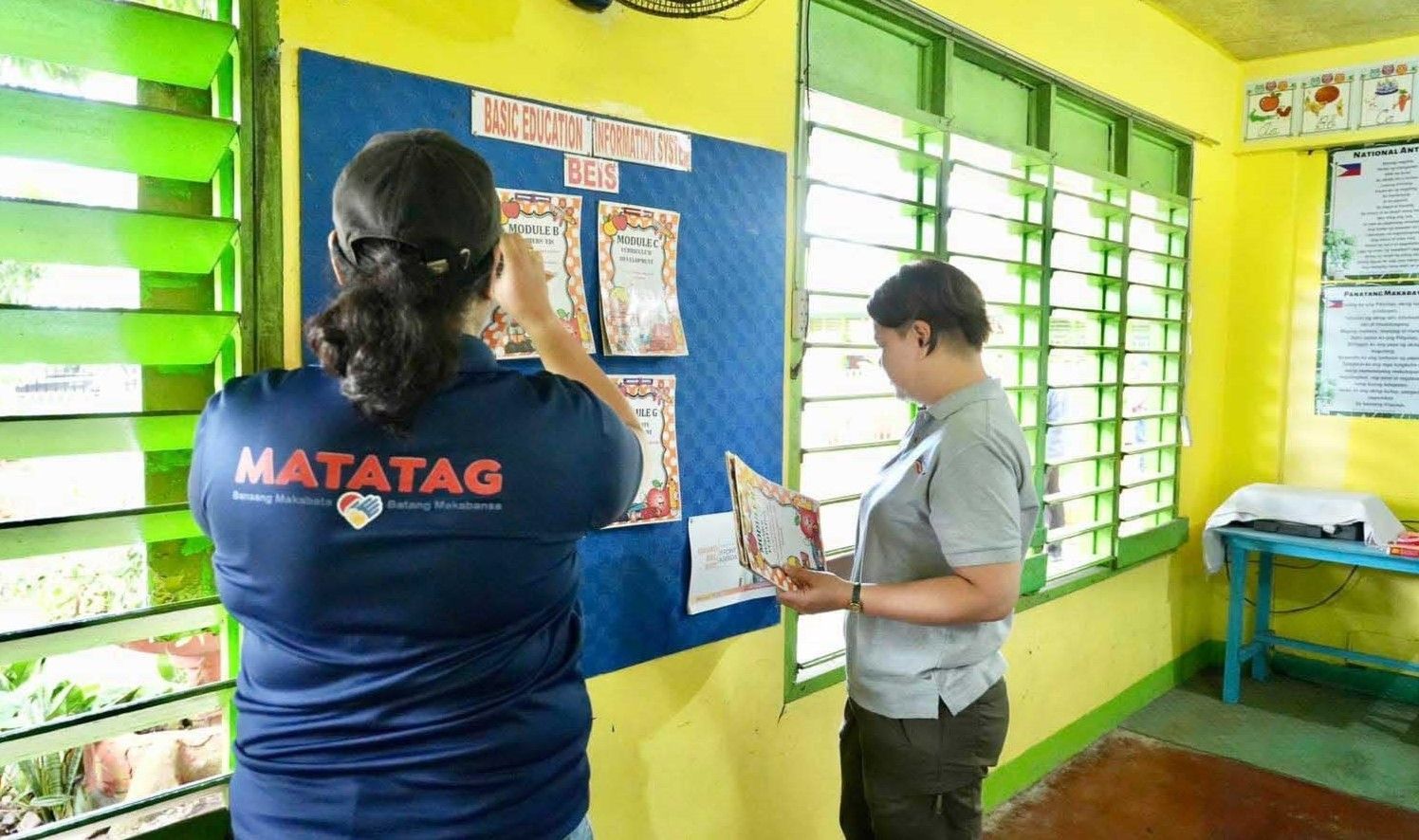Just before the start of classes in public schools today, August 29th, Vice President and Education Secretary Sara Duterte ordered the removal of visual aids, decorations, and even students’ artwork from the walls of public school classrooms.
She said that the aim of this order is to lessen distractions and improve the focus of students in their lessons.
Duterte went on to cite guidelines from DepEd (Department of Education) Order No. 21, Series of 2023, which states that all schools shall ensure that school grounds, classrooms and all its walls, and other school facilities are clean and free from unnecessary artwork, decorations, tarpaulin, and posters at all times.
Duterte wanted everything written or attached to the walls of classrooms to be removed, including charts, diagrams, and pictures of national heroes and former and current presidents. Apparently, she viewed these things as clutter.
Duterte had a basis for making this decision. After all, it was found in certain studies, such as the one entitled “Visual Environment, Attention Allocation, and Learning in Young Children: When Too Much of a Good Thing May Be Bad” published in the journal Psychological Science, that children learned more when the classroom was not heavily decorated.
While I acknowledge the results of this study as well as understand where VP Sara D. is coming from, I do not completely agree with the removal of everything written or attached to the walls of classrooms.

I started my formal education at the age of four, but even before enrolling as a Nursery student, my mother let me sit in preschool classes at the age of three. For as long as I can remember, I have always loved going to school. For me, education is the greatest investment. Knowledge is something that can never be stolen from us yet it is also something that we can share over and over with everyone and never run out. It is also something that we can pass on to future generations.
However, aside from looking forward to gaining more knowledge, I also looked forward to coming to school every day for various activities. I looked forward to poster-making and diorama-making competitions in particular. Having talent in art, I was often chosen as a representative for these contests. Once, in third grade, I even represented the entire school in a painting competition during the Fiestang Kuliat in Angeles City – I won third place!
Being in the “best section” of our batch, my classmates and I also almost always win song festivals, sports festivals, essay writing contests, declamation contests, and other competitions. Along with these winnings, come medals, trophies, certificates, and other awards that we tend to display at the back of our classroom. We take pride in knowing that our trophies will remain in that classroom and be seen by future batches. We hoped that they would be inspired to win too.
Our young faces beamed with pride and joy as we admired the awards we won. We experienced the same happiness whenever our schoolwork was posted on the bulletin boards. In grade school, we made comic strips, self-portraits, collages, and all sorts of fun projects. Our teachers would then select the best ones and put them on display. I remember being really excited to see my work displayed.
We also frequently had groupings where we had to draw on cartolinas to display on the walls of our classroom. These groupings were sometimes made to be competitions to see which group makes the best artwork.
Seeing our artwork on display boosted our self-confidence and self-worth, and creating the project strengthened our bond as classmates and gave us a sense of camaraderie. Likewise, the friendly competitions allowed us to explore and enhance our talents as well as teach us about the realities of winning and losing. These values we learned in childhood served us well in adulthood. We had a lot of fun decorating our classrooms with our own artwork, but we also learned.
So, while I am aware of the benefits of having a minimalistic classroom, I believe that completely removing all visual aids and decorations is a tad harsh. After all, it has been a tradition for teachers to decorate their classrooms every year for decades.
As an educator myself, I experienced decorating bulletin boards myself before the start of the school year. I taught middle-school students, so I only put appropriate classroom decor. I did not include anything that would no longer be functional for them at their age.
With this being said, I also believe that visual aids should be kept in the classrooms of younger students, especially because they tend to be visual learners. Colorful pictures, charts, and bold prints can help stimulate their senses better.
Even studies, such as the one entitled “Effects of Visual Aids in Enhancing Teaching and Learning Process in Public Secondary Schools in Ilemela Municipality, Tanzania” published in the Journal of Research Innovation and Implications in Education, recognize the positive effects of visual aids in the classroom.
While Duterte said that teachers can still use visual aids strictly during their classes, I don’t think this is enough as these materials also tend to supplement the lessons. Students can look at these visual aids during their free periods and recall the lessons better. The more they see pictures of planets, posters on Internet etiquette, or the algebra table on the walls of their classrooms, the more they remember them. In essence, these tools can help students absorb and retain information better.
If used correctly and in moderation, classroom decorations and visual aids can encourage creativity and participation. They can also set an environment that fosters greater motivation for learning. Not having any decoration or visual aid at all can result in a less engaging, enthusiastic, and stimulating learning environment. This, in turn, can cause students to have decreased attention, comprehension, and information retention.
The key lies in balance. Classroom decorations and visual aids can be stimulating but not overwhelming. They can be engaging but not distracting. They can serve as powerful tools that are capable of reshaping the learning experience of Filipino students. So, rather than eradicating them completely, we should harness their potential and allow them to nurture young minds.
